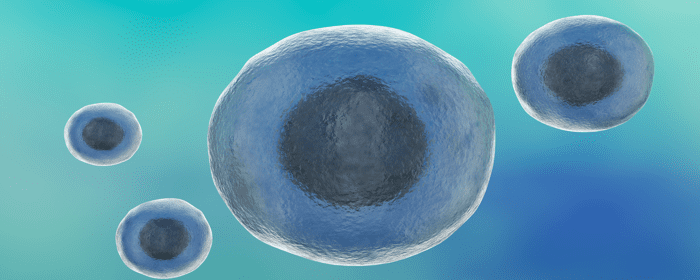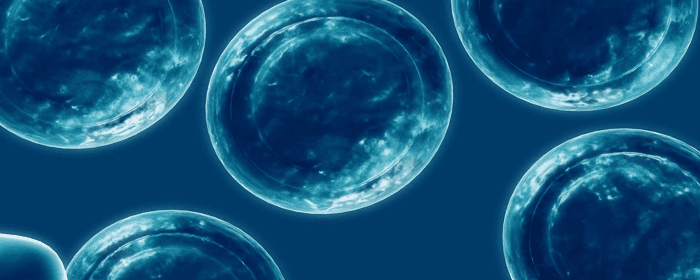
by admin | Dec 28, 2023 | Diabetes, Mesenchymal Stem Cells, Stem Cell Research, Stem Cell Therapy
Type 2 diabetes mellitus (T2DM) is a serious health condition characterized by progressive deterioration in glycemic control resulting from decreased insulin sensitivity and diminished insulin secretion. Currently, it is estimated that over 462 million people worldwide are affected by T2DM.
While diet, physical exercise, and glucose-lowering medications have been shown to improve hyperglycemia, the results have been temporary and have not been able to inhibit the pathogenesis or reduce the morbidity associated with this condition.
With the need for more effective approaches for the treatment of T2DM to be developed, Zang et al. conducted this single-center, randomized, double-blinded, placebo-controlled phase II trial study to explore the efficacy and safety of intravenous infusion of umbilical cord-derived mesenchymal stem cells (UC-MSCs) in Chinese patients with T2DM.
MSCs are a type of adult stem cell that exhibits profound anti-inflammatory and immunomodulator capacities. Considering the successful application of MSCs in a number of autoimmune diseases, including stroke, myocardial infarction, rheumatoid arthritis, and systemic lupus erythematosus, the authors hypothesized that MSC transplantation might also be a therapeutic option for the treatment of T2DM.
Specifically for this study, the authors randomly assigned 91 patients to receive intravenous infusion of UC-MSCs or placebo three times at 4-week intervals and followed up for 48 weeks over a period of three years.
The primary endpoint established for this study was the percentage of patients with glycated hemoglobin (HbA1c) levels of < 7.0% and daily insulin reduction of > 50% at 48 weeks; additional established endpoints included changes of metabolic control, insulin resistance, and safety.
At the end of the 48-week follow-up period, Zang et al. report that 20% of patients in the US-MSCs group and 4.55% reached the primary endpoint with the percentage of insulin reduction of the UC-MSCs group being significantly higher than that of the placebo group. The authors also reported that the glucose infusion rate (GIR) increased significantly in the UC-MSCs group while there was no significant observed change in the placebo group. There were also no major UC-MSC transplantation-related adverse events reported during this study.
While these results are promising, the authors point out that since the age, course of T2DM, condition of the islet β-cell function, and insulin resistance of the enrolled subjects were highly heterogeneous, the results of this study could not be extended to all patients with T2DM. The authors also call for additional long-term follow-up to validate their initial, short-term findings as well as for future well-controlled studies with an increased number of cases to better clarify the efficacy and safety of intravenous infusion of UC-MSCs for the treatment of T2DM.
The authors conclude this study by suggesting intravenous infusion of UC-MSCs administration is a safe and effective approach that could reduce exogenous insulin requirements alleviate insulin resistance and be a potential therapeutic option for patients with T2DM.
Source: Zang, L., Li, Y., Hao, H. et al. Efficacy and safety of umbilical cord-derived mesenchymal stem cells in Chinese adults with type 2 diabetes: a single-center, double-blinded, randomized, placebo-controlled phase II trial. Stem Cell Res Ther 13, 180 (2022). https://doi.org/10.1186/s13287-022-02848-6

by Stemedix | Dec 25, 2023 | Health Awareness, Mesenchymal Stem Cells, Regenerative Medicine, Stem Cell Research, Stem Cell Therapy, Stroke, Studies
According to the Centers for Disease Control and Prevention, more than 795,000 people have strokes every year in the United States, and about 610,000 of these are first or new strokes. Recovering from a stroke can be a complex process that involves many types of therapies, and one option that shows promise is stem cell therapy.
Stem cell therapy promotes growth factors and offers relief from inflammation, providing the possibility of healing the damage the stroke caused. Learn more about stem cell therapy when used for the recovery period after a stroke.
How Strokes Affect the Brain
A stroke is like a heart attack, except it takes place in your brain. It occurs when something blocks the blood supply to the brain, not allowing the organ to get the oxygen and nutrients it needs. If your brain doesn’t receive blood, its cells begin to die off or suffer damage, making it impossible for the organ to do its job.
Your brain controls everything your body does, including how you move and how you think, feel, and communicate. The results of a stroke are immediate.
The two main types of strokes are ischemic strokes and hemorrhagic strokes. Ischemic strokes are the most common type and are caused by blockages. They can occur when:
- A blood clot forms in the main brain artery.
- A blockage forms in the small blood vessels deep within the brain.
- A blood clot from the heart or another type of blockage travels via the bloodstream to an artery supplying the brain.
Hemorrhagic strokes occur when there’s bleeding in or around the brain. They can be the result of a blood vessel bursting in the brain, or a blood vessel on the surface of the brain may burst and leak blood in the area between the skull and the brain.
When you have a stroke, the areas of the brain it affects determine the kind of issues you can struggle with.
Some people experience weakness and paralysis in certain parts of their body, while others struggle with language and the processes of speaking or understanding what other people say. A stroke can even affect what your voice sounds like.
Other issues you may experience include:
- Balance problems
- Incontinence
- Trouble swallowing
- Visual problems
- Extreme fatigue
- Feeling pain
You may also struggle with mental processes like memory, concentration, understanding, and perception. Strokes can even affect your emotions.
Understanding Stem Cell Therapy: What Are Stem Cells?
Stem cells are the body’s building blocks. They are responsible for creating organs, tissues, and even your immune system. They are undifferentiated cells that can become and create specialized cell types. In other words, they can become any cell within the body, depending on where they’re placed.
Stem cells can also divide indefinitely, either creating other stem cells or specialized cells. When used to help the recovery period after a stroke, stem cells can differentiate into brain cells.
When they’re used in the brain, they don’t integrate and become neurons that reconstruct circuits. They instead start pumping out growth factors that enhance the recovery process, allowing new blood vessels and neurons to form. All of this helps make the brain more flexible, giving it a chance to recover after a stroke.
Neuroplasticity is what’s necessary for people who’ve suffered a stroke. It is the ability of the brain to rearrange its circuits, basing the organization on your behaviors.
Benefits of Stem Cell Therapy After a Stroke
Stem cell therapy is minimally invasive. You don’t have to worry about procedures that require long recovery processes or force you to spend time in the hospital. When you get stem cell therapy, the process is fast and can be done as an outpatient treatment.
Stem cells don’t just mask the symptoms of the damage the stroke caused. Experiencing pain after a stroke many times means turning to pain medications, which temporarily give you relief but also have unpleasant side effects. When you turn to stem cell therapy, your brain gets what it needs to start healing.
One of the most important things that stem cell therapy offers is the chance to relieve inflammation. When you suffer an injury of any kind, including a stroke, your body’s natural healing process causes inflammation.
This type of swelling, however, doesn’t allow a regular flow of blood to the injured area. Without the right degree of circulation, the damaged area doesn’t receive nutrients or oxygen, which makes healing more difficult. Stem cells help reduce inflammation, making the process of healing easier.
How the Stem Cell Therapy Process Works
Mesenchymal stem cells (MSCs) have been studied for their potential therapeutic applications in various medical conditions, including stroke. MSCs have several properties that make them attractive candidates for stroke therapy:
- MSCs possess anti-inflammatory properties that can help modulate the immune response and reduce inflammation in the brain following a stroke. Excessive inflammation is a key contributor to secondary damage after a stroke.
- MSCs can modulate the immune system, potentially suppressing harmful immune responses while promoting tissue repair and regeneration.
- MSCs secrete various growth factors and neurotrophic factors that support neuronal survival, growth, and differentiation. These factors can contribute to the repair and regeneration of damaged neural tissue.
- MSCs can stimulate the formation of new blood vessels (angiogenesis), which is crucial for supplying oxygen and nutrients to the damaged brain tissue.
- While the ability of MSCs to differentiate into neurons is limited, they may contribute to neural repair indirectly by interacting with the local environment and supporting the survival of existing neurons.
Is Regenerative Medicine Right for You?
Suffering a stroke can be devastating, leaving you with lasting damage and impacting your quality of life. Along with physical therapy and other treatments your doctor recommends, patients are exploring their options with stem cell therapy. Stem cell therapy and other regenerative medicine options offer the opportunity to give your brain the tools it needs to start healing. By helping reduce inflammation and bringing growth factors to the treatment area, stem cell therapy provides the chance to promote neuroplasticity and start healing.

by admin | Dec 14, 2023 | Parkinson's Disease, Mesenchymal Stem Cells, Regenerative Medicine, Stem Cell Research, Stem Cell Therapy
Parkinson’s disease (PD) is the second most predominant neurodegenerative disorder worldwide, affecting over 10 million people. Characterized by a slow and progressive loss of control of the neurological system as a result of dopamine depletion, symptoms of PD often include tremors, slowed movement, impaired posture and balance, and gradual loss of automatic movements.
While PD cannot be cured, current treatment is focused on alleviating symptoms and slowing the progression of the disease. Specifically, deep brain stimulation or therapies to increase DA levels by administering a DA precursor are the available therapy options for PD.
However, research has found that DA precursor therapy has little effect on the progression of PD and its efficacy decreases as the disease progresses.
Recent progress in the clinical understanding of regenerative medicine and its properties associated with stem cell therapy has provided the opportunity to evaluate new and potentially effective methods for treating a wide range of neurodegenerative illnesses, including PD. Specifically, mesenchymal stem cells (MSCs) have been found to be the most promising form of stem cell and have demonstrated the ability to differentiate into dopaminergic neurons and produce neurotrophic substances.
In this review, Heris et al. discuss the application of MSCs and MSC-derived exosomes in PD treatment.
Research has identified dysregulation of the autophagy system in the brains of PD patients, suggesting a potential role for autophagy in PD. In PD models, MSCs may activate autophagy signals and exhibit immunomodulatory effects that alleviate inflammation and improve tissue healing; this type of treatment had previously been used in treating various forms of neuroinflammatory and neurodegenerative illnesses.
The authors indicate that MSCs can be administered either systemically or locally. While systemic transplantation allows MSC-based treatment of pathologies affecting the entire body, local transplantation aims to alleviate symptoms associated with illnesses that originate from certain organs and is performed through intramuscular or direct tissue injection.
Research has also demonstrated that stem cell-derived dopaminergic transplants could be a suitable method for the long-term survival and function of transplants; in the case of MSC therapy, the average dose in animal models is usually 50 million cells for each kg of weight.
MSC-derived exosomes demonstrate therapeutic characteristics similar to their parents, have the ability to avoid whole-cell post-transplant adverse events, have a high safety profile, cannot turn into pre-malignant cells, and no cases of immune response and rejection have been reported.
While the use of MSCs in the treatment of PD continues to show potential, Heris et al. point out that many of the clinical trials have had few participants and can be costly. Considering these limiting factors, the results from these studies are not able to be generalized to everyday medical care without further clinical studies to address these concerns.
Source: “The potential use of mesenchymal stem cells and their exosomes in ….” 28 Jul. 2022, https://stemcellres.biomedcentral.com/articles/10.1186/s13287-022-03050-4.

by Stemedix | Dec 4, 2023 | Regenerative Medicine, Adipose, Age Management, Stem Cell Research, Stem Cell Therapy
No one wants to grow old. That is apparent from the huge amounts of money people spend on anti-aging products and services each year. These products and services include everything from lotions to more invasive options like plastic surgery.
However, healthier aging is possible without relying on invasive procedures. Stem cell rejuvenation, for example, offers promising results for people searching for ways of going through a healthier aging process.
Intrinsic vs. Extrinsic Aging: What to Know
Intrinsic aging refers to the various traits you inherited, including collagen and elastin production levels, hormonal balance, and more. The thinning lips or particular types of wrinkles you see on your parents, for example, are intrinsic aging traits, and you will likely deal with them as you age, too.
Intrinsic aging doesn’t just refer to visible signs of aging. It also includes the damage that occurs to organs and other body tissues as you get older. How fast an organ deteriorates and how fast tissues regenerate to keep up with the damage all depends on intrinsic aging.
Extrinsic aging refers to the things that you can control about aging. It includes lifestyle choices like smoking, not eating correctly, and so much more.
Both intrinsic and extrinsic factors in aging begin to accumulate, sending messages of aging to the core of stem cells. Thus, everything associated with aging can be seen through the lens of stem cells.
Understanding Stem Cell Rejuvenation
Introducing youthful stem cells into the body can make it easier to rejuvenate existing cells, helping the body age in a healthier way and even offering the chance to reverse some of the effects of aging.
As you age, your cells are not as efficient at replicating as they were when you were younger. This leads to cells getting damaged and dying off. Inefficiency in cell replication leads to aging bodies.
Stem cells are the cells that create specialized cells. They are your body’s building blocks. To combat the natural aging process, stem cells can help regenerate damaged tissue. This is because they can be made into various cell types.
Stem cells can also stimulate the production of growth factors and other molecules that trigger healing mechanisms, helping maintain healthy tissues. Chronic, low-grade inflammation is associated with aging, and stem cells help to reduce inflammation.
They do this by impacting the processes of white blood cells. Macrophages are white blood cells that are integral to the immune system. M1 macrophages can create inflammation, while M2 macrophages reduce it.
Stem cells help transform M1 macrophages into M2 macrophages. This stimulates the process of reducing inflammation.
Another way stem cells help battle against the aging process is by modulating the immune system. They have the potential to maintain a healthy immune system and delay the type of immune dysfunction that comes with age.
Oxidative stress also plays a role in aging. Free radicals damage cells, leading to many of the issues the aging process causes. Stem cells help combat the effects of oxidative stress.
Stem cells also have the potential to affect visible signs of aging. They can increase collagen production, which is vital for maintaining skin flexibility and firmness. As part of the aging process, your collagen production decreases, leading to the formation of fine lines and wrinkles.
The Process of Stem Cell Rejuvenation
Stem cell rejuvenation begins with choosing the right type of stem cells. The main stem cell type used is mesenchymal stem cells.
Mesenchymal stem cells (MSCs) are a type of multipotent stem cell that can differentiate into a variety of cell types. They are typically found in the stromal or connective tissue of various organs and tissues in the body.
MSCs were first identified in the bone marrow, but they can also be isolated from other tissues such as adipose (fat) tissue, and umbilical cord tissue.
MSCs possess immunomodulatory properties, meaning they can regulate the immune system. They can influence the activity of immune cells, such as T cells and macrophages, and have anti-inflammatory effects. This makes them potentially useful for treating conditions with immune system dysregulation.
MSCs exhibit low immunogenicity, meaning they are less likely to provoke an immune response when transplanted into a recipient. This characteristic makes them potentially suitable for allogeneic (from a donor) transplantation.
MSCs have been studied for their potential therapeutic applications in regenerative medicine, tissue engineering, and treatment of various diseases, such as autoimmune disorders, cardiovascular diseases, and musculoskeletal conditions.
If from a patient’s own tissues, the healthcare provider extracts the stem cells and prepares them for injection. They then inject the stem cells into the treatment area to provide relief from inflammation while encouraging your body to start regenerating tissues at the same time.
Because stem cells have the ability to endlessly duplicate themselves, the benefits of stem cell therapy for rejuvenation purposes can only improve over time.
Benefits of Stem Cell Rejuvenation
Stem cell rejuvenation procedures are minimally invasive. They require an extraction of stem cells and then an injection or the introduction of an IV. Other procedures that target aging can be significantly more invasive, leading to long recovery times.
The results continue to improve over time. This is because stem cells will go on to multiply where they were injected, potentially leading to more powerful results.
Stem cell rejuvenation can target the aging process at the cellular level, helping reduce inflammation and prevent oxidative stress. Stem cells may lead to an increase in collagen production as well, which helps combat fine lines and wrinkles.
Choosing Regenerative Medicine
Anti-aging solutions don’t have to involve invasive procedures or the reliance on options that take a very long time to work. Regenerative medicine treatments like stem cell therapy offer the chance to tackle the causes of aging at the cellular level.
Stem cells can offer anti-inflammatory results while also targeting free radicals and helping repair damaged tissues as well as damaged stem cells. By turning to regenerative medicine options, you have the chance to find rejuvenation solutions that can work.

by admin | Nov 30, 2023 | Erectile Dysfunction, Mesenchymal Stem Cells, Regenerative Medicine, Stem Cell Research, Stem Cell Therapy
Erectile dysfunction (ED) is a disorder that affects the quality of life and the sexual relations of more than half of the male population aged over 40 years. Currently, it’s estimated that his disorder will affect more than 300 million men in the next five years.
According to the Mayo Clinic, male sexual arousal is a complex process that involves the brain, hormones, emotions, nerves, muscles, and blood vessels. Erectile dysfunction can result from a problem with any of these. Additionally, stress and mental health concerns can cause or worsen erectile dysfunction.
The treatment of ED has traditionally been based on the temporary enhancement of penile erection but without a permanent treatment option. Current temporary treatment options include phosphodiesterase type-5 inhibitors (PDE5is) such as vardenafil, avanafil, tadalafil, and sildenafil, which are the most widely known and used medications for the treatment of ED.
Unfortunately, the treatment failure levels associated with these drugs are high, with unresponsive rates ranging between 20 and 40%. These failure rates often require the use of additional treatment options for the management of ED, including the use of intracorporeal injections, vacuum erection devices, and penile prosthesis implantation. However, the use and application is also limited due to the high cost, intolerance to side effects, pain, and unsatisfactory results.
Recently, several studies have suggested the use of stem cells for the treatment of ED to be promising in terms of damaged tissue repair as well as clinical efficacy.
In their review of current literature, Protogerou et al. evaluate and summarize the methods of administration, the cell types used in the performed clinical trials, and the safety and efficiency of procedures designed to treat ED.
Specifically, the authors reviewed 10 clinical studies published between 2010 and 2020 and used bone marrow-derived stem cells (BMSCs), adipose tissue-derived stem cells (ADSCs), umbilical cord stem cells, and placenta-derived stem cells. One of the studies reviewed also examined the re-administration of stem cells as a potential therapeutic option. From the authors’ findings, each study demonstrated encouraging results characterized by improved sexual function with no side effects.
Protogerou et al. also point out a number of limitations with these studies, including each being a small study with a short follow-up period, various etiologies of ED, and without control groups.
Despite these limitations, the authors highlight the urgent need for a double-blind randomized controlled study for the clinical effect of stem cell treatment in ED to sufficiently understand the ideal therapeutic strategy for using stem cell therapy to treat ED. Source: “Erectile Dysfunction Treatment Using Stem Cells: A Review – PMC.” 6 Jan. 2021, https://www.ncbi.nlm.nih.gov/pmc/articles/PMC7825548/.






 St. Petersburg, Florida
St. Petersburg, Florida
